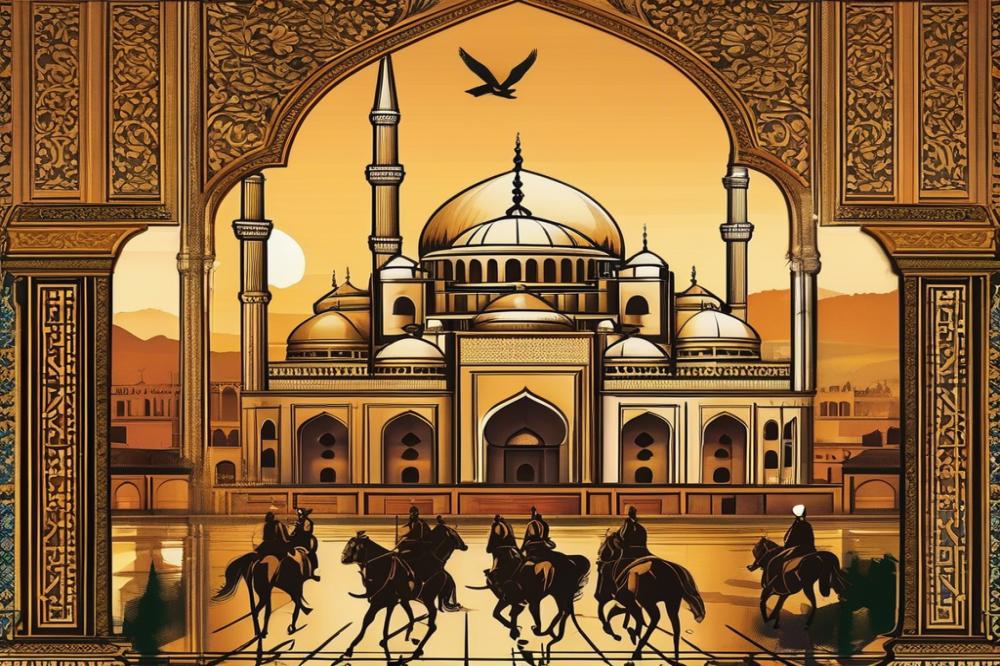Introduction
The role of horses throughout history cannot be overstated. These majestic animals have been vital to many cultures in various ways. In military settings, they served as essential partners in warfare, providing speed and mobility. Economically, horses contributed to trade and transport, helping societies grow and prosper. Their presence shaped social structures, influencing land ownership and status.
The Ottoman Empire, known for its vast territory and rich culture, thrived in part due to its relationship with these powerful creatures. Horses played a significant role in the empire’s expansion and daily life. Through skilled breeding and training, they ensured a strong cavalry, crucial for battles. Furthermore, these animals facilitated trade routes across diverse regions.
This article aims to explore how horses contributed to the rise of the Ottoman Empire. By examining their multifaceted roles, we can better understand the intricate connections between these animals and the empire’s success. From military conquests to economic advantages, the influence of horses is undeniable. Join us as we dive deeper into this fascinating subject.
Horses in the Ottoman Empire
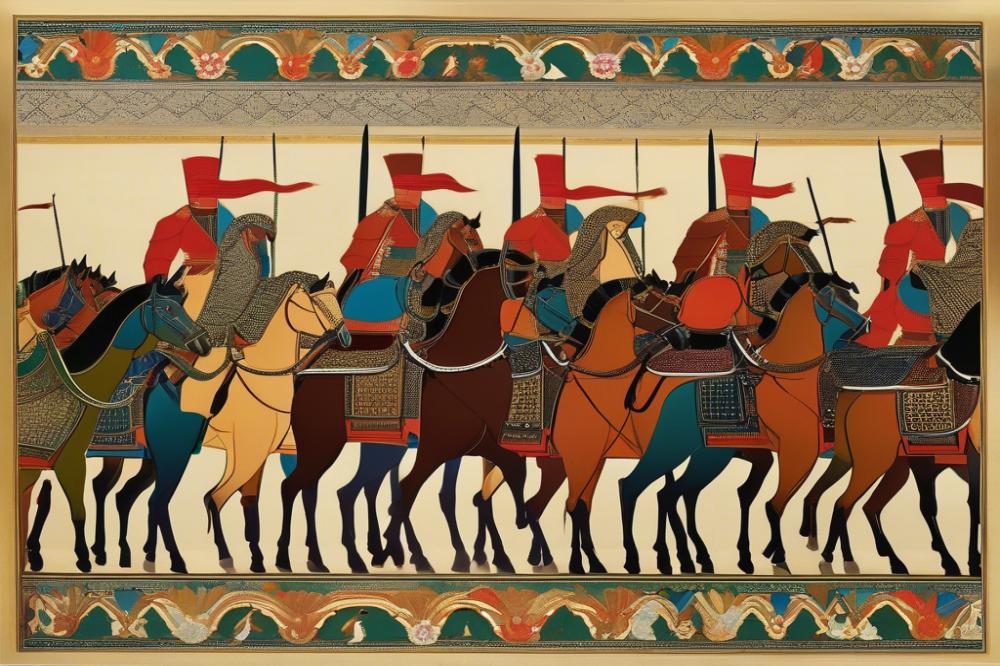
The significance of horses in the Ottoman Empire cannot be understated. These majestic animals played a vital role in both warfare and daily life. Military campaigns relied heavily on cavalry units, which were often pivotal in battles. Horses allowed for swift mobility and strategic advantages over adversaries. A well-trained horse could mean the difference between victory and defeat.
Various horse breeds were cherished by the Ottomans. Among them, the Arabian horse stood out for its speed and endurance. These horses were ideal for long journeys across deserts and could handle the rigors of battle. Another favored breed was the Anatolian horse. Known for their strength and resilience, they adapted well to the diverse terrains of the empire’s vast landscape.
Mounting an Arabian horse or an Anatolian steed was not just a practical choice; it showcased status and wealth. Nobles often owned the best horses and treated them with the utmost care. Special stables were built to house these animals, and skilled grooms looked after them meticulously. In cities, horses were essential for trade. Merchants depended on them to transport goods efficiently, linking distant markets.
The Ottoman Empire stretched over a wide geographical area with varying climates and terrains. From the mountains to open plains and desert regions, horses had to adapt accordingly. Strong and hardy animals thrived in harsher environments, while more delicate breeds flourished in fertile areas. Different breeds played unique roles based on their characteristics. Knowledge of these differences allowed the empire to maximize the potential of each horse.
Overall, the relationship between horses and the Ottoman Empire was complex and multifaceted. Trust between horse and rider was cultivated over countless hours of training. The need for reliable mounts in both battle and commerce shaped the empire’s history and expansion. Appreciation for these animals went beyond utility; they became a symbol of power and prestige.
Cavalry and military strategy
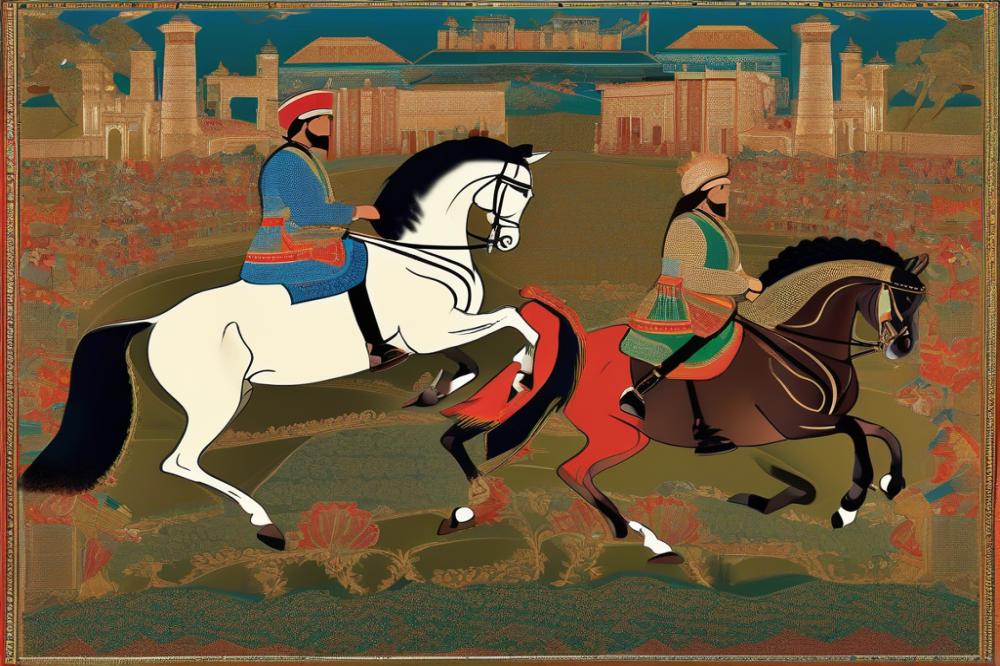
The Ottoman cavalry was vital to military success. Their horse-mounted troops played a crucial role in battle tactics, allowing for rapid movement across the battlefield. This mobility often surprised and outmaneuvered enemy forces. Cavalry units were trained extensively, making them formidable opponents. Riders developed strong bonds with their horses, creating an effective partnership in combat.
Several tactics defined their approach to warfare. One common method involved flanking enemy positions. By attacking from the sides, cavalry units could disrupt formations and spread chaos. Another key tactic was feigned retreat. This trick lured enemies into a vulnerable state, leading them into ambushes orchestrated by fresh troops ready to attack.
Furthermore, cavalry formations greatly influenced outcomes in battles. A well-organized lineup could create a wall of force, making it difficult for foot soldiers to breach. The Ottomans often employed a mix of heavy and light cavalry. Heavy cavalry charged against enemy lines, while light cavalry harassed and disoriented the enemy from a distance.
These strategies diminished the effectiveness of rival armies. Even larger forces struggled against the speed and flexibility of Ottoman cavalry. Their success depended not only on training but also on the strategic use of horses. Adequate coordination between riders and their mounts enhanced overall performance during conflicts.
In summary, the effectiveness of the Ottoman military hinged significantly on its cavalry. By mastering horse-mounted warfare tactics, they carved a path of dominance across regions. Their military strategies showcased the importance of adapting to both terrain and opponent weaknesses. As a result, the cavalry played a pivotal role in establishing the empire’s strength on the battlefield.
Transportation and Mobility
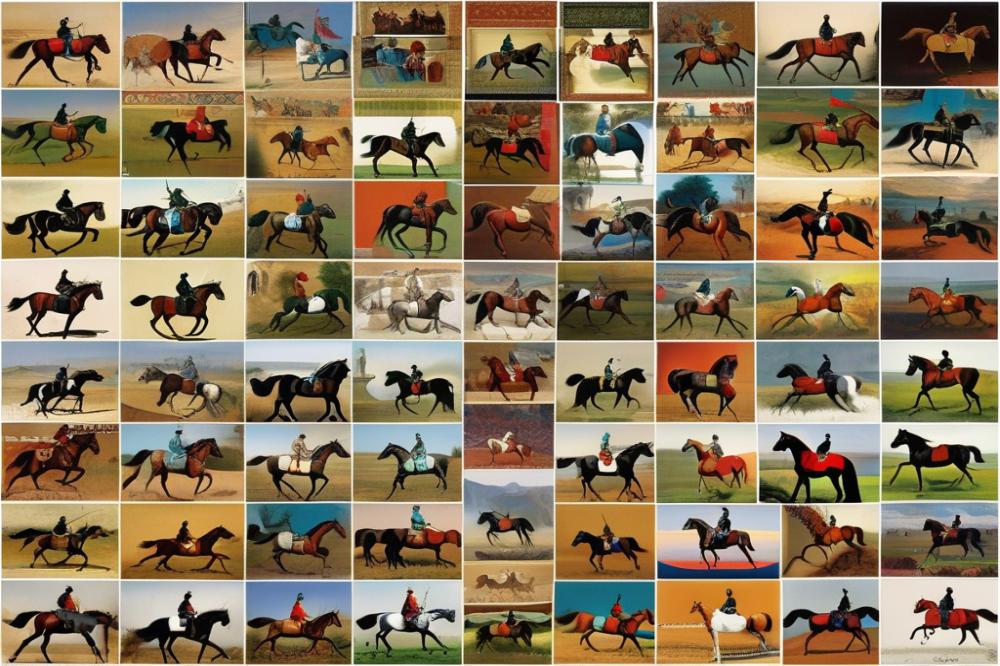
Horses played a vital role in the movement of people and goods throughout the empire. Riding horses made travel faster and more efficient. Messengers on horseback could carry important information across vast distances more quickly than any other means of transport of the time.
This speed was essential for communication. Leaders needed updates from various regions to govern effectively. News of events could travel from one part of the territory to another within days instead of weeks. Such rapid information exchange allowed governors and military leaders to make timely decisions.
In addition to communication, trade routes flourished thanks to horse transport. Merchants relied on trained horses to move their goods to markets. Horse caravans could transport bulky items like textiles and spices from city to city. This system boosted trade and enriched local economies.
Furthermore, cavalry units were crucial for maintaining order and defending the realm. Mounted soldiers could deploy swiftly to respond to threats. Their ability to navigate difficult terrains gave the empire a strategic advantage against enemies.
Horses also contributed to the culture of travel and mobility. Communities developed around trade routes, fostering connections between diverse groups. Each settlement had its unique character and products to offer. This interaction encouraged not just the exchange of goods, but also ideas.
To summarize, the importance of horses in enhancing transportation across the empire cannot be overstated. Their impact on communication, commerce, and military readiness shaped the landscape of the region. The legacy of this mobility can still be felt today.
Agriculture and Economy
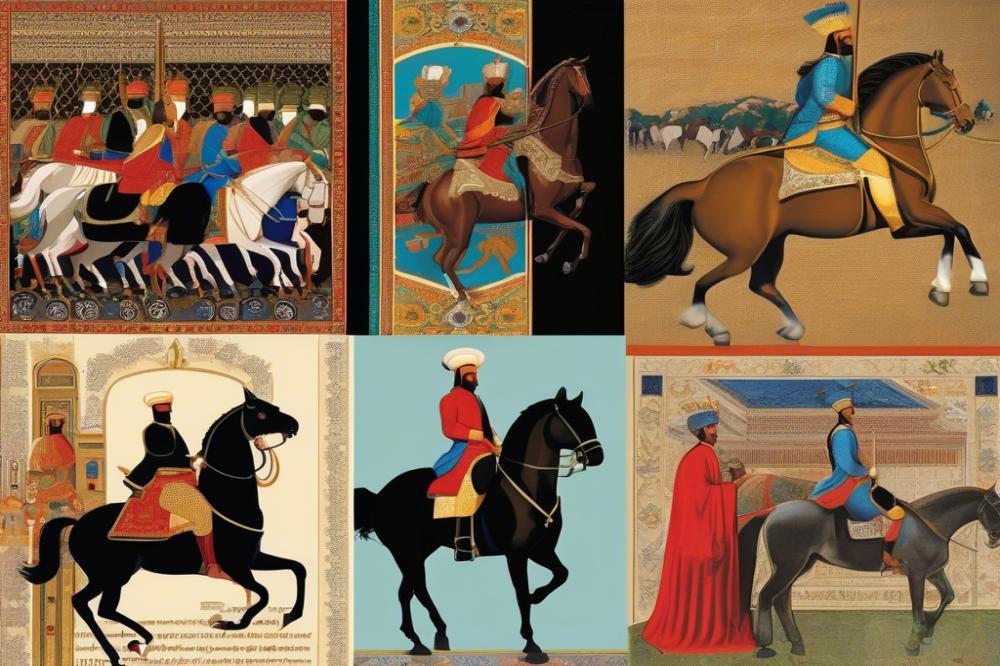
Horses played a crucial role in the agriculture of the Ottoman Empire. They helped farmers plow fields more efficiently. With a strong horse, less physical labor was required. This change allowed for larger areas of land to be cultivated. The power of these animals increased productivity significantly.
Using horses made farming tasks faster. Farmers could transport their crops to market with ease. With more efficient transportation, goods reached consumers quicker. This led to better prices and more vibrant local economies. Markets thrived as a result of these advancements. Increased agricultural output boosted trade and commerce.
The connection between horsepower and economic growth is clear. As farms became more productive, profits rose. Families could sell more produce than ever before. This surplus encouraged investment in additional resources. Some communities even began to specialize in specific crops or livestock. Such specialization further enhanced overall efficiency in production.
Horseback riding also transformed communication routes. Messages and goods traveled faster across vast distances. The ability to send news promptly connected various parts of society. It helped maintain stability and order in the empire. A well-informed society is often a more prosperous one.
Overall, horses were more than just livestock. They were vital to both agriculture and the economy. The relationship between man and horse created a foundation for growth. This significant bond shaped not only farming practices but entire communities as well. The legacy of these majestic animals continues to influence agricultural methods today.
Trade and Commerce
Horses were fundamental to the trade networks of their time. They provided a crucial means for transporting goods over long distances. Robust and reliable, these animals were the backbone of supply chains among various regions.
Merchants relied heavily on horses to move products such as spices, textiles, and precious metals. Trade routes stretched from the eastern reaches of Asia to the shores of Europe. Horses could carry heavy loads, making them ideal for long journeys.
Roads and trails used by traders often became more developed due to the needs of horse-drawn transport. As a result, routes became safer and more efficient. Local economies flourished when trade improved. People had access to goods they would never have seen otherwise.
The role of horses in commerce extended beyond mere transport. They also enhanced communication. Riders could relay messages quickly between far-off settlements. This speed became vital for traders who needed to make decisions on the fly.
Different breeds suited various tasks in trade. Some were prized for speed, while others excelled at endurance. These unique traits helped merchants choose the right horse for their specific needs.
Horses also represented wealth and status. Owning strong and healthy horses became a symbol of success. Individuals often showcased their steeds at marketplaces, attracting attention and business.
The impact on society was significant. Increased trade led to cultural exchanges among different peoples. Goods were not the only things passing along these routes; ideas and traditions traveled too.
By facilitating trade, horses played an indispensable role in the growth of markets. As cities developed, so did commerce and social interactions. This growth created a complex web of relationships that connected diverse communities.
In conclusion, the importance of horses in trade cannot be overstated. Their strength, speed, and impact on communication all contributed to the rise of prosperous networks. As people gained access to a wider array of products and ideas, the bonds between different cultures grew stronger.
Breeding and Equestrian Culture
Horse breeding in the Ottoman Empire played a vital role in its development. Nobility and common folk alike admired these animals. Breeding practices were carefully maintained, focusing on strength, speed, and beauty. Specific breeds were favored for their talents in battle and transportation. Arab stallions were often sought after for their endurance. These horses were highly prized and became symbols of prestige.
Training methods varied across regions. Some favored gentle techniques, while others used strict discipline. Riders learned from experienced trainers. The bond between horse and rider was considered sacred. Equestrian skills were an essential part of one’s education. Young boys and girls were often taught to ride early in life. Mastery of horsemanship signified maturity and readiness for responsibilities.
Horses influenced social status significantly. Wealthy families owned the finest steeds and often showcased them at events. People gathered for races that drew large crowds. Such competitions were festive occasions, displaying both skill and chivalry. Winning a race brought honor and recognition. Beating a rival on horseback showcased not just speed but also superior training.
Leisure activities centered on horses as well. Villagers would organize casual rides in the countryside. This pastime fostered a sense of community. Parks filled with equestrian games became popular spots for socializing. Royalty often held elaborate events centered around equestrian displays. These occasions captivated the public and reinforced the importance of horses. Equine culture saturated daily life, from labor to leisure.
Additionally, artistic representations of horses flourished during this era. Painters admired their grace and strength, capturing these qualities on canvas. Literature also featured horses prominently. Stories of brave riders and noble steeds inspired many. Overall, the bond between people and horses revealed much about the society of the time.
Warfare Innovations
Warfare changed significantly during the time of the Ottoman Empire. Horses played a central role in these changes. Cavalry units formed the backbone of many military strategies. They provided speed and mobility that infantry units could not offer. This allowed armies to outmaneuver their enemies effectively. The use of mounted troops became a decisive factor in battles. Troops on horseback could charge quickly and retreat just as fast.
The Ottomans embraced various tactics involving horses. They developed light cavalry known as the Sipahi. These horsemen excelled in skirmishing. With bows and arrows, they could rain down arrows on adversaries from a distance. Ranging far and wide, they often disrupted enemy formations. This method changed how battles unfolded on the battlefield.
Siege warfare also saw strategies evolve. Horses carried heavy artillery like cannons. This enabled armies to breach city walls more efficiently. Mobility meant that they could besiege fortifications rapidly. Supply lines became crucial during these operations. Mongolian lessons on horse usage heavily influenced Ottoman tactics. Understanding these past influences helped bolster their strategies.
Moreover, communication during battles improved due to horses. Riders delivered messages swiftly across the battlefield. This direct line of communication led to quicker decision-making. Commanders could adjust tactics based on real-time information. The ability to relay orders made a massive difference during conflicts.
Logistics also benefited from horse use. Supply trains drawn by horses delivered essential provisions. Armies could sustain themselves far from home bases, extending their reach. Cavalry units could scout ahead, providing vital reconnaissance. Knowing the terrain and enemy positions gave the Ottomans strategic advantages.
Lastly, the cultural significance of horses cannot be overlooked. They symbolized power and prestige in Ottoman society. Riding was a skill highly regarded among nobles. Elite warriors often showcased their horsemanship as a display of valor. As such, horses were not just war tools; they were status symbols within the empire.
Final Thoughts
Horses played a vital role in the growth and success of the Ottoman Empire. They were not just modes of transport but essential companions in battles and daily life. The cavalry, made up of skilled horsemen, helped to expand territory and maintain control over vast regions. Their mobility allowed for quick responses to threats and the ability to surprise enemies. Without horses, the empire would not have achieved the same level of military prowess.
The contributions of these animals went beyond just warfare. In trade, horses facilitated the movement of goods across distances, connecting various regions. This created a network of relations between different cultures and communities. Societies exchanged ideas and goods, which enriched life within the empire. Horses were also central to agriculture, aiding farmers in plowing and transporting supplies. The reliance on these animals showcases their importance in everyday life.
Looking at the lasting effects of equestrian culture, it is clear that the impact is still felt today. Modern military strategy often includes elements that trace back to ancient cavalry tactics. Additionally, the bond between humans and horses remains strong in various societies. Equestrian sports and leisure riding have become popular activities in many parts of the world. They signify freedom, tradition, and connection to history.
In summary, the influence of horses on the empire’s rise was profound. From military success to economic growth, their role cannot be understated. As we reflect on history, we see how these animals shaped not just an empire, but also the cultures that followed. Understanding their significance helps us appreciate the deep roots of equestrian life in our modern world.

